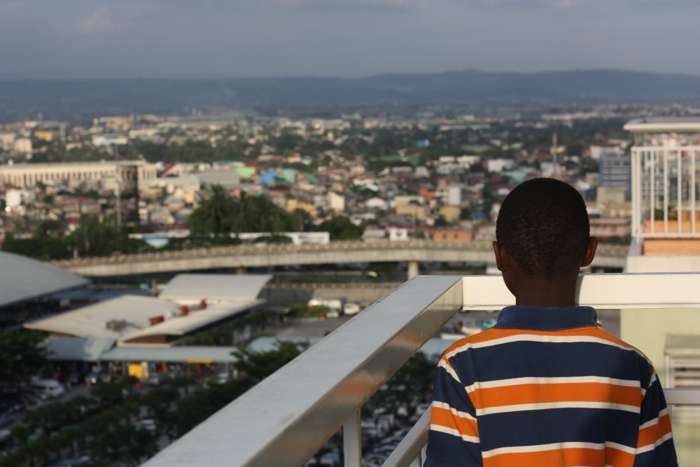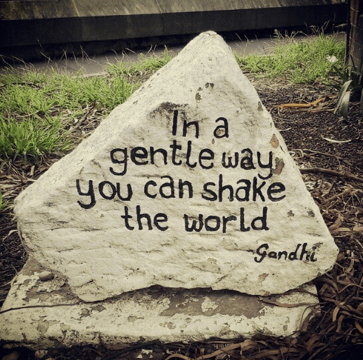
This month I’m blogging from the Philippines on behalf of Love146. If you’ve missed any posts in this series, head here to catch up:
- Education that nurtures, education that heals
- The abolition of child trafficking and exploitation. Nothing less.
Over the past two weeks as I’ve written about modern-day slavery and our family’s personal mission to abolish it, a few readers have asked questions like these:
“How much do your kids actually know about your husband’s work with Love146?”
“How do I talk to my children about an issue as dark and complex as this one?”
This post addresses those questions, providing ideas about how to approach this topic with your own family. I’ve categorized the thoughts below by age range, but please keep in mind that our kids vary drastically in their development.
Some will be ready for information at an early age, some late. I tend to veer toward the better late than early philosophy–especially when I’m giving advice to so many of you–but you are the expert in your home so adjust as needed.
Ages 3-5
 Photo by Marilyn de Guehery, Love146
Photo by Marilyn de Guehery, Love146
Young preschoolers understand three things well: children, home, and family. Use these concepts as the starting point of talking with them about this issue–or any injustice involving other children.
When they were this age, Trishna, Jonathan, and Elijah knew that Daddy went to work “to help children whose families aren’t able to take care of them and who need a safe home.” Adding any other details simply isn’t necessary.
Ages 6-8
 Elijah looking out over Manila from our balcony apartment
Elijah looking out over Manila from our balcony apartment
During this stage of life our children slowly became aware of slavery and injustice in the past, as we read picture books about Abraham Lincoln and other figures involved in freedom and abolition.
I selected books on the topic carefully because I did not want to focus on the horrors of slavery at this age, but instead on the victories of heroes like Abraham Lincoln, the Underground Railroad, Martin Luther King, and so on.
At the same time Steve and I began to introduce the idea that there are still slaves in the world today–people, even children, forced to work in ways they would not choose who cannot quit even if they want to.
Here are a few popular picture books on the topic – preview first to determine what’s appropriate in your home:
- Henry’s Freedom Box: A True Story of the Underground Railroad
- Sweet Clara and the Freedom Quilt
- Freedom Summer
- Moses: When Harriet Tubman Led Her People to Freedom
- Martin’s Big Words: The Life of Dr. Martin Luther King, Jr.
- Abe Lincoln: The Boy Who Loved Books
- Dave the Potter: Artist, Poet, Slave
- Looking at Lincoln
- More Than Anything Else
Purchasing Choices
Young children are beautifully idealistic and may ask if they can help after learning that slavery still exists. Please let them know your family will take action and make a difference!
Much of the slavery in the world exists around the production of coffee, chocolate, and other goods. (You can find out how many slaves currently work for you by discovering your slavery footprint.)
I suggest buying and using The Better World Shopping Guide as a starting point to become aware of how your purchasing choices affect others on the planet. Though not exclusively about slavery, it rates popular companies based on justice and other criteria.
Making your own positivity jar also empowers young kids to see that their good choices at home can impact others far from home. Maybe you can start one as a family and donate the money to our Love146 education fund at the end of the month or whenever it’s full.
Ages 9-11
 Photo by Marilyn de Guehery, Love146
Photo by Marilyn de Guehery, Love146
During this age range you can begin to present the idea of sex trafficking and exploitation–depending on how much your children know about sex. We have just crossed this bridge since being here in the Philippines this summer. Here’s how we handled it:
It surprised our kids to hear that some enslaved children receive payment. To our kids it seemed “quite nice” of the slave owners to pay them for their work.
I saw immediately that we needed to clarify a few things–they were ready to understand that some things are not for sale.
But since we haven’t had “the talk” yet, I needed to discuss it from an angle they could understand. We’ve spoken to them for years about their “private parts” and that others are not allowed to touch them.
So I approached the conversation like this:
What if someone offered you money if you would steal something for them?
What if someone offered to give you money if they could look at or touch your private parts?
What if nobody had ever told you that your private parts were private?
What if you thought that the only way you could eat that day, or get money for your sick mother or father, was by letting someone touch you in a bad way?
I told them that some things are just wrong–not for sale–and that anyone who offered you money for them would be trying to trick and control you.
It was a deep conversation, but at the end I could tell they really “got it” in a new way–one that allowed them to understand a bit more of the issue’s darkness and complexity without feeling completely overwhelmed.
Ages 12-15
 Photo by Marilyn de Guehery, Love146
Photo by Marilyn de Guehery, Love146
The first step in educating your teens about trafficking is to educate yourself.
Love146 has put together an extremely helpful overview to modern-day slavery.
It’s a must read for parents, no matter how old your kids are, that describes the difference between trafficking and exploitation, what slavery looks like in different countries (Yes, trafficking is also common in the United States and the rest of the Western world), the ways traffickers target vulnerable children–girls AND boys–and what modern-day freedom looks like.
Young teens can comprehend more of these complex details. I suggest reading the overview first yourself, then determining whether your child can go through it with you, or what information from it you can extract to share with them.
Ages 16-18
 Photo by Marilyn de Guehery, Love146
Photo by Marilyn de Guehery, Love146
At the right time older teens can handle the depth of information that would not be appropriate for other ages.
How we talk to our kids about trafficking matters, so I suggest reading about the common myths regarding this issue as well as the best language and terms to use when discussing it.
There’s even an anti-trafficking curriculum that can be used by families or small groups to understand modern-day slavery and develop a personal response as a task force or individual. It could make an excellent addition to a high school curriculum at home or with a co-op.
Don’t lose hope
“Lord save us all from a hope tree that has lost the faculty of putting out blossoms.”
~ Mark Twain
This month as an online homeschooling community we are raising money for the education of child trafficking survivors in the Philippines.
Far from a distant story on the headline news, these are living, breathing giggly young girls that I have watched dance, sing, and tell silly jokes until they’re asked to calm down.
In short, they’re just like our own children. And though they’ve been through the valley of the shadow, they’ve come out on the other side.
Would you consider donating to the home education library and the education fund for the girls in the Round Home? We are over halfway toward paying for an entire year of learning for them all!
I have been poring over online lists to choose books for their new library, book shopping with a grin on my face, and feeling so much gratitude to all of you for helping to make this possible.
Donations can be given securely by clicking here. As a community we can track the amount we’ve raised, and if your family would like to get more involved you can set up your own mini-fundraiser with a separate page to track your own giving toward this project. Thank you!
“My idea of a safe home is where we nurse the bird’s broken wing. If we do well with our nursing, then the bird should be able to fly again, out of the safe home, and soar to the heights it was meant to reach.”
~ Dr. Gundelina Velazco, Love146 Director of Aftercare
 Click here to download Jamie's free e-book: Secrets of a Successful Homeschool Mom. Thanks for reading Simple Homeschool!
Click here to download Jamie's free e-book: Secrets of a Successful Homeschool Mom. Thanks for reading Simple Homeschool!
HELPFUL RESOURCES:
- Great Homeschool Conventions - Outstanding and affordable homeschool events.
- K12 Online School - Schooling at home, but not alone.
- Uzinggo - Upper level math & science curriculum.
- Artterro - Eco-friendly arts & crafts kits.
- A Thomas Jefferson Education - FREE training for homeschoolers.
- Sparkle Stories - Original audio stories for children all year long.
- Imagine Childhood - Toys, tools, and activities for growing minds.
- Lavender's Blue Homeschool - Peaceful parenting and holistic homeschooling.
- Brave Writer - Find peace and progress in the writing process.
- Little Passports - Monthly packages deliver the world to your child.
- All About Reading - Free reading downloads.
- Christopherus Homeschool Resources - Waldorf-inspired homeschooling.
- Home Art Studio - Your personal art teacher.
-
How to talk to your kids about modern-day slavery is a post from Simple Homeschool
© 2010-2013 Simple Living Media, LLC | All rights reserved - This feed is provided for the convenience of Simple Homeschool subscribers. Any reproduction of the content within this feed is strictly prohibited. If you are reading this content elsewhere, please contact hello@simplelivingmedia.com to let us know. Thanks.
